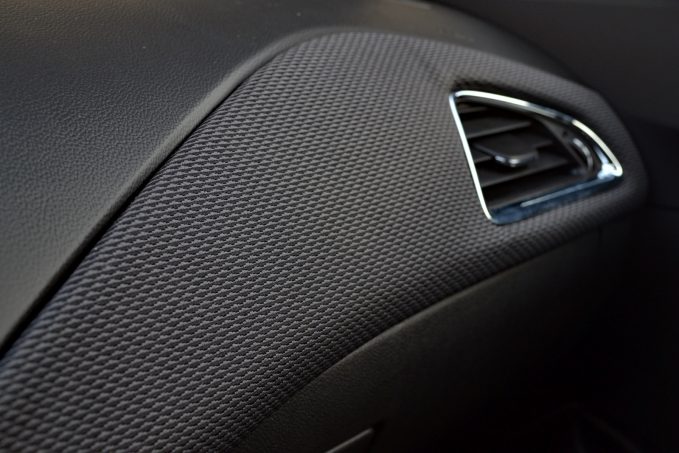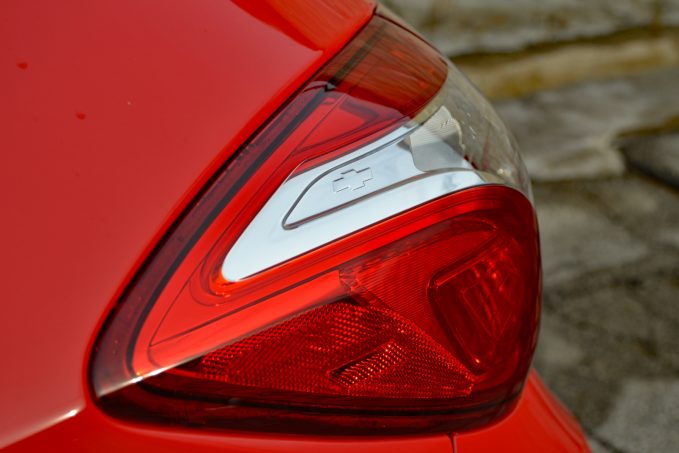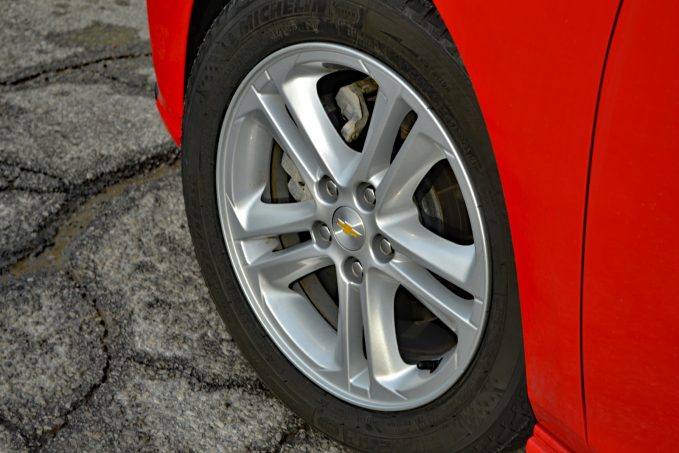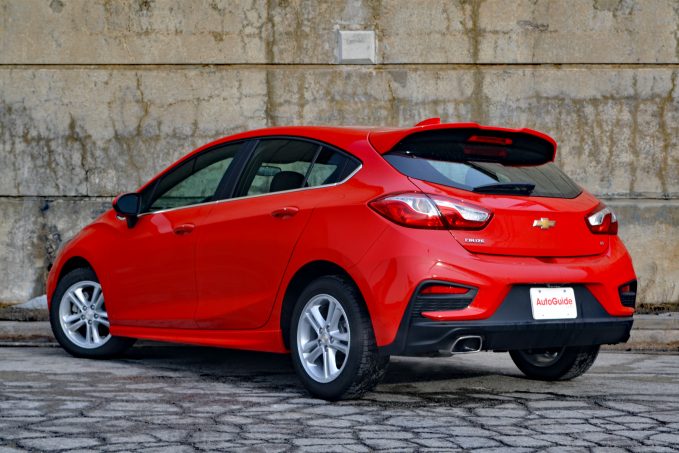As far as treacherous winter conditions go, the drive to Detroit for the auto show each January can be about as bad as it gets.
The same reasons that make the area around Motor City great for wind generation — it’s as flat as a turbocharged engine’s torque curve and is shoehorned up against a massive body of water — also make it an ideal place for wicked winter weather to strike at a moment’s notice. From clear and sunny skies one minute to snow squalls the next, it’s about as unpredictable as it gets.
The slippery conditions are one thing; it’s the poor visibility caused by blowing snow that’s toughest to deal with. Modern logic would suggest an all-wheel-drive crossover or sport utility is best suited for the severe drive. Personally, I don’t subscribe to that school of thought. There’s little a high-riding crossover or SUV can do in such conditions — aside from burn more gas — that a compact car can’t easily accomplish. This is why I was more than happy to head down the highway in the hatchback version of the 2017 Chevrolet Cruze.
Setting Out
With a nasty storm in the forecast, my decision to depart early was looking like a fortuitous one. In hopes of finding some good company for the drive, I met up with a couple of colleagues while much of the city was still sleeping off their Saturday nights.
ALSO SEE: 2017 Honda Civic Sport Hatchback Review
The Cruze’s roomy cabin meant there was more than enough room for all three of us to get comfortable, though adding another passenger would likely make things a little too cozy for the four-hour drive. Head- and legroom in the front seats, at 38.9 inches (988 millimeters) and 42 inches (1,067 mm), respectively, proved to be plenty, while the same measurements for the rear were more than adequate for an adult. At 37.8 inches (960 mm) of headroom and 36.1 inches (917 mm) of legroom, space in the hatchback’s rear seats is on par with the five-door versions of the Honda Civic and Mazda3.
Unfortunately, cargo room proved to be a bit of an issue. While the Cruze hatchback’s 24.7 cu-ft (699 liters) of space looks good on paper, a high load floor means usable space is actually much less. It still offers more space behind the rear seats than the Mazda3 hatch (20.2 cu-ft, 572 liters), but the cargo compartment filled quickly after loading our overnight bags.
Getting Comfortable
Back in the cabin, and with coffee in tow, we were ready to hit the road. Our tester was finished in LT guise, which differs greatly between U.S. and Canadian markets. American examples are fairly limited in terms of options, with only a so-called Convenience package available that includes heated front seats, a power-adjustable driver’s seat, keyless entry and push-button start. Canadian examples, meanwhile, can be kitted out like the pricier Premier trim to include options like a nine-speaker Bose audio system and eight-inch touchscreen infotainment system. With an integrated Wi-Fi hotspot and Android Auto smartphone interfacing (it also includes Apple CarPlay), I was able to seamlessly sync my phone to set our course using Google Maps, which displayed on the big and bright infotainment screen like a native navigation system would.
ALSO SEE: 2017 Mazda3 2.5L Review
As far as entry-level compact cars go, the Cruze hatch offers plenty of standard and available tech that won’t break the bank. The car does come up a little short in terms of the overall aesthetic of the interior, though. The cabin is filled with more hard plastic than a bin of Lego, and the fabric used inside, especially on the door panels and dash, feels like a duvet cover at the Holiday Inn. In short, the Cruze’s cabin feels like a rental car, and could benefit from some nicer materials. Surprisingly, the seats both front and rear proved to be tremendously comfortable after hours of driving, offering plenty of support despite a lack of lumbar adjustability. The driver’s seat, meanwhile, is positioned nice and high to provide a clear view of what’s going on around the car.
Enjoying The Drive
Exactly what was going on around the car for the first two hours or so amounted to not a whole lot. The shining sun was working quickly to melt the snow that had fallen overnight, leaving little to worry about as we cruised along the otherwise empty highway.
With the cruise control set to about 78 mph (125 km/h), the car’s turbocharged four-cylinder chugged along with little fuss. Mated to a six-speed manual, the 1.4-liter has an almost VTEC-like qua
lity to it, with the boost kicking in with a pronounced punch in the meaty part of the rev range. It helped make passing what few cars we encountered a breeze, with the Cruze coming alive when called upon to perform a bit like a poor man’s Ford Focus ST.
ALSO SEE: 2017 Subaru Impreza Review
Dropping the silky smooth shifter from sixth to fifth gears, engine speed climbing above 2,500 rpm, there was little doubt the engine’s output — 153 horsepower and 177 lb-ft of torque — was enough to motivate the Cruze even with 600 lb (272 kg) of combined additional weight inside. Adding that extra heft to the manual Cruze LT hatchback’s curb weight of 2,892 lb (1,312 kg) and the torquey four-cylinder was still up to the task of providing a surprising turn of speed.
The manual gearbox used to relay the engine’s torque to the front wheels proved nothing short of excellent and is easily counted among the best the segment has to offer. Unlike the Civic and Subaru Impreza, which feature impossibly light shifters, the stick in the Cruze has some substance to it and lets the driver know it’s there. Likewise, the clutch has a nice bit of resistance to it while remaining forgiving. It’s easy to use and the point of engagement isn’t difficult to find, making it a great third pedal for novice and veteran manual drivers alike.
In Like a Lion, Out Like a Lamb
The engine braking afforded by the Cruze hatchback’s manual transmission soon came in handy as one of the area’s famous winter weather events took center stage. With the sunny skies quickly transforming into a wall of white, I dropped the transmission a few gears to match speed with the traffic that was quickly building on the three-lane highway. Except the shimmering stream of sheet metal wasn’t taking full advantage of all the asphalt beneath it, leaving the left lane empty of cars, trucks and SUVs. In their wake was a layer of fresh snow thick enough to keep even the boldest SUV drivers at bay. No matter, though — it was time to make a move. There was a slight waggle as the car’s left front wheel tried to grab at the loosely packed snow and then we were off, the Cruze brimming with confidence as we continued to glide along the highway unobstructed. Granted, a fair amount of credit belongs to the Michelin X-Ice winter tires that were mounted on the car’s 16-inch alloy wheels.
ALSO SEE: Why All-Wheel Drive Isn’t Enough in Winter
Despite the poise the car possessed, it wasn’t long before we had to bail on our low-speed solo run and duck back in line with the rest of the weather-weary drivers on the road. The steady buildup of snow and the lack of fellow travelers in the mood to help clear it left the Cruze’s usually precise steering unnervingly fluttery. And then, just like that, the skies cleared, our sudden blast of winter weather disappearing as quickly as it arrived.
The Verdict: 2017 Chevrolet Cruze LT Hatchback Review
The return trip was nowhere near as eventful, which helped improve the car’s fuel economy — though only slightly. The combination of milling around town a bit and driving to Detroit and back saw the Cruze return a combined average of 31 mpg (7.6 L/100 km) over the course of more than 500 miles (800 kilometers) of driving, not great numbers considering the majority of that mileage was racked up on the highway. It only got worse from there, dipping below 30 mpg (7.9 L/100 km) after a few more days of driving. That, for the record, is closer to the Cruze LT hatchback’s city fuel economy rating than its combined rating. But then again, I doubt a crossover or SUV could fare any better.
Other than its relatively poor fuel economy, the Cruze hatch provided a pleasant drive with little to complain about. It’s peppy and quiet and fairly smooth, three crucial criteria a commuter car should meet.












